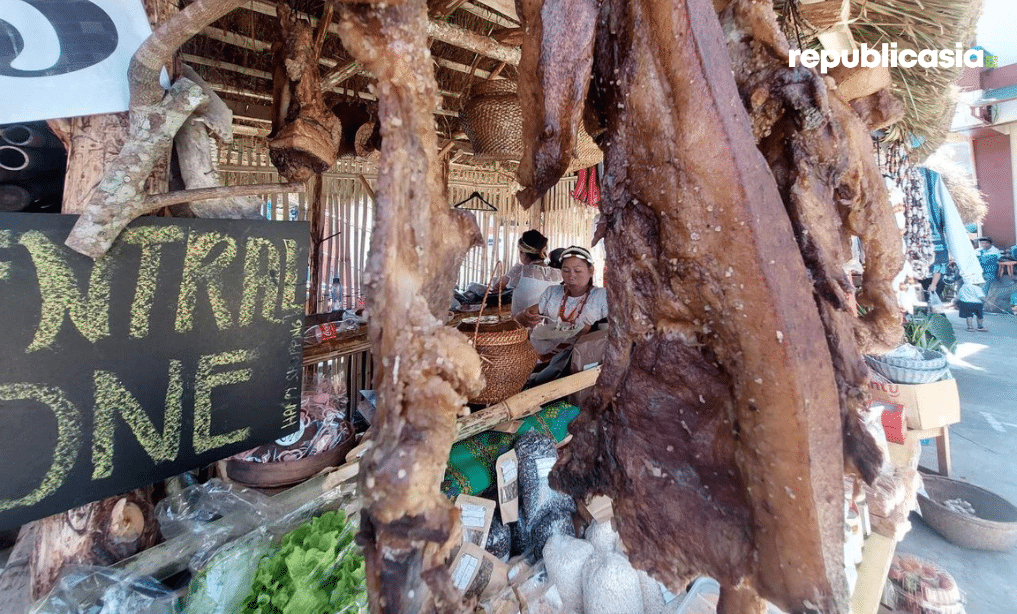SAGADA, MOUNTAIN PROVINCE: For thousands of years, the indigenous peoples of the Mountain Province have perfected the traditional preservation of meat. They call it “etag.”
It’s pronounced as itag’. But no, it’s not electronic tag or your RFID.
“Etag” is the traditional method of making the meat’s storage life usually takes longer, lasting for months and even years.
Some tribes of the other provinces like Kalinga and Abra also call the meat preversation technique as “etag.”
The Isnags of Apayao call it “Sinapan,” and the IPs of Benguet call it “Kiniing” or “Kinuday”.
“Etag” is the Cordillera IPs’ version of ham or bacon of the Western World.

Why ancestors need to meat
Many cultures have their own way of preserving meat.
During those years, there was no electricity and, of course, no refrigerators and freezers.
Meat is essential and ordinary in every house of the Igorots (people of the mountains) of the Cordillera and is one of their staple food. Butchering pigs, cows, and carabaos are familiar, especially on occasions like “cañao” or community feasts and rituals.
Etag in every ritual
In the Mountain Province, aside from cañaos, the practice of making “etag” is done on every occasion and rituals like “Begnas” or harvest festival, “Gobbaw” or indigenous way of giving blessings and Igorot names to babies and young ones by the elders.
“Etag” is also essential in cooking “pinikpikan”, or the Igorot traditional way of cooking chicken or ducks, used for healing rituals and purposes.
In every cañao and occasion, the hosts or the community butcher a number of pigs and animals. There will be a lot of meat leftovers, as expected. To prevent such from going to waste because of spoilage, the process of making “etag” comes in.

How meat is preserved
The pork, usually the breast and belly parts of the pig, is salted and stocked in a basket or container. The salted meat will be left for three to 12 hours so that the flesh will absorb the salt. After that, the meat will be hung and let air and sun-dried in the open.
In some parts of the Mountain Province, the salted meat will be sun-dried for weeks to months and then stored in dry and warm containers. In other places like Sagada, the Sagadanians hung them at the fire stove area, or unique smokers, to be smoked for days.
How to eat etag
“Etag” meat is good to be eaten in its 1st month, more delicious in its 3rd month and best in its 6th month. And “Etag” is perfect when eaten on its one-year or more storage life.
Commercial etag
As this tradition of preserving the meat continues, Etag is now commercially available.

Recently, IPs of Sagada, Mountain Province, manifested their pride in their culture as they showcased their unique heritage during the cultural day of their “etag” festival 2023.
Etag Festival in Sagada
Every February, from the 2nd to the 5th day, Sagada celebrates the “Etag” Festival.
The festival symbolizes their gratitude for the bountiful harvest in their town.

This year, Sagada is celebrating its 10th “Etag” Festival after two years of hiatus because of the pandemic.
Kankanaey Sagadians believe the festival would turn away the “anged” or the bad juju or evil spirits that bring bad luck and bring back peace and order.
This year, the theme is “Napigsa ay Kultura ya Pammati, Wedweday i-Gabay ya Isikan di Umili (Strong Culture and Faith, The Firm Guidance and Growth of the Community).

photos by Aldwin Quitasol
How useful was this post?
Click on a star to rate it!
Average rating 0 / 5. Vote count: 0
No votes so far! Be the first to rate this post.
We are sorry that this post was not useful for you!
Let us improve this post!
Tell us how we can improve this post?







